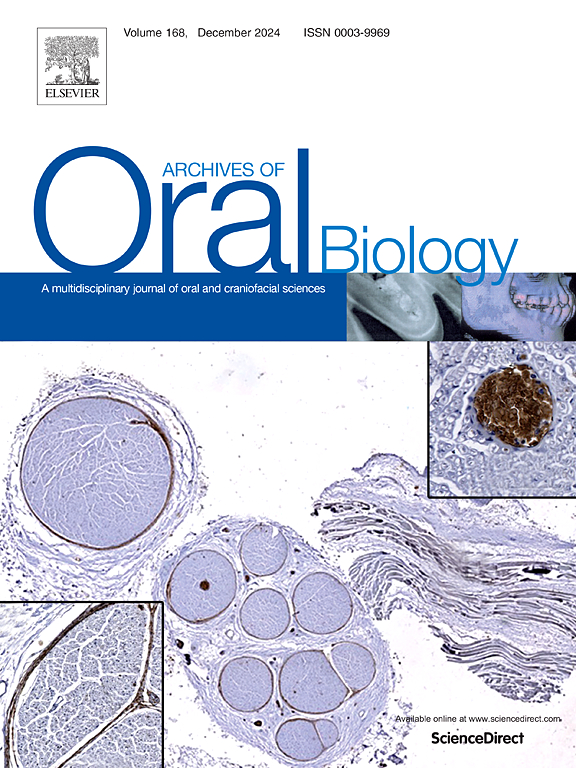A case of impacted third molar from the prehistoric Hypogeum of Calaforno (Giarratana, Ragusa, Sicily): Reflections on the antiquity and evolutionary implications of this trait
IF 2.1
4区 医学
Q2 DENTISTRY, ORAL SURGERY & MEDICINE
引用次数: 0
Abstract
Objectives
This study examines a rare case of an impacted third molar identified in a fragmented right mandibular hemiarch from the prehistoric Hypogeum of Calaforno (Giarratana, Ragusa, Sicily, Italy), dating to the Late Eneolithic period (2600–2300 BC).
Design
A detailed osteological examination and palaeoradiological imaging were employed to analyze the mandibular fragment, leading to the identification of a horizontally impacted third molar pressing against the second molar.
Results
The analyses revealed clear evidence of a horizontally impacted third molar, contributing to the limited bioarchaeological record of dental impactions in ancient populations. The findings are interpreted within the broader evolutionary history of third molar impactions, considering genetic, developmental, and dietary factors as potential influences. The study also underscores the value of incorporating modern radiological methods into archaeological research.
Conclusions
This case provides new perspectives on the antiquity and potential prevalence of impacted third molars in ancient populations, suggesting that their apparent rarity in the archaeological record may be due to methodological challenges rather than an actual absence.
来自史前Calaforno (Giarratana, Ragusa, Sicily)地下洞穴的撞击第三磨牙一例:对这一特征的古代和进化意义的反思
本研究研究了一个罕见的病例,在史前Calaforno (Giarratana, Ragusa,西西里岛,意大利)的下颌骨碎片中发现了第三磨牙,可追溯到新石器时代晚期(公元前2600-2300年)。设计采用详细的骨学检查和古放射学成像来分析下颌碎片,从而确定了水平阻生的第三磨牙压在第二磨牙上。结果分析揭示了水平嵌塞第三磨牙的明确证据,为古代人群牙齿嵌塞的有限生物考古记录做出了贡献。考虑到遗传、发育和饮食因素是潜在的影响因素,研究结果在第三磨牙嵌塞的更广泛的进化史中得到了解释。这项研究还强调了将现代放射学方法纳入考古研究的价值。本病例为研究古代人群中第三磨牙的古老程度和潜在的普遍性提供了新的视角,表明它们在考古记录中的明显罕见可能是由于方法上的挑战,而不是实际的缺失。
本文章由计算机程序翻译,如有差异,请以英文原文为准。
求助全文
约1分钟内获得全文
求助全文
来源期刊

Archives of oral biology
医学-牙科与口腔外科
CiteScore
5.10
自引率
3.30%
发文量
177
审稿时长
26 days
期刊介绍:
Archives of Oral Biology is an international journal which aims to publish papers of the highest scientific quality in the oral and craniofacial sciences. The journal is particularly interested in research which advances knowledge in the mechanisms of craniofacial development and disease, including:
Cell and molecular biology
Molecular genetics
Immunology
Pathogenesis
Cellular microbiology
Embryology
Syndromology
Forensic dentistry
 求助内容:
求助内容: 应助结果提醒方式:
应助结果提醒方式:


